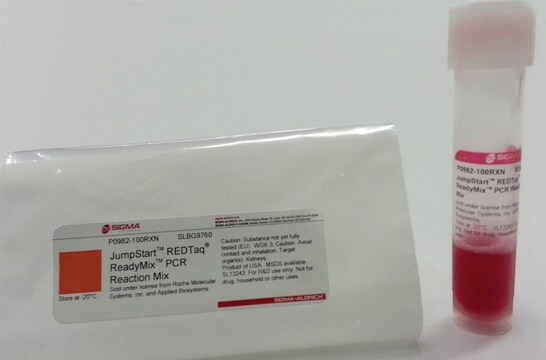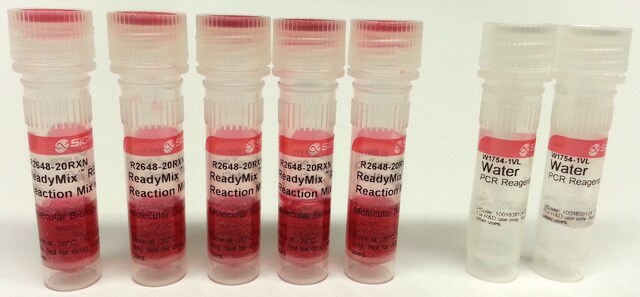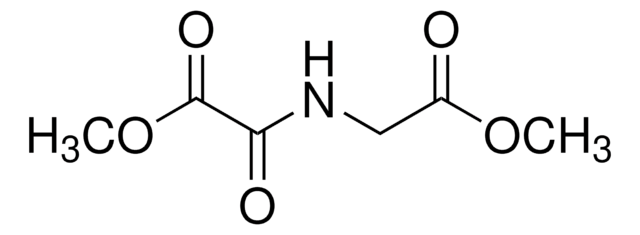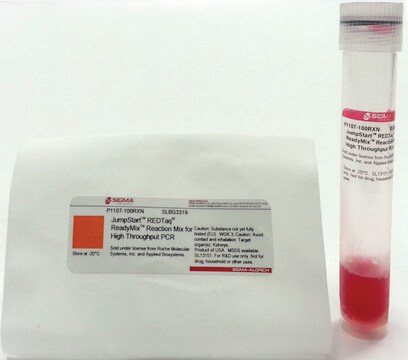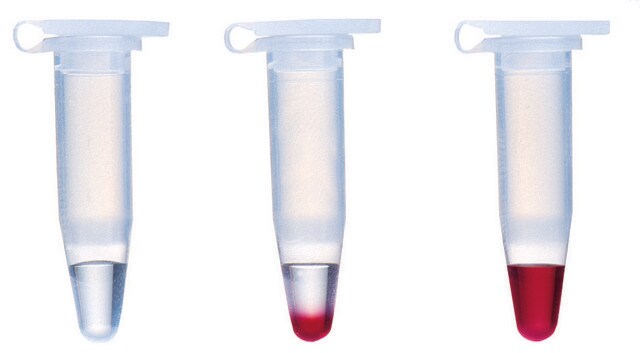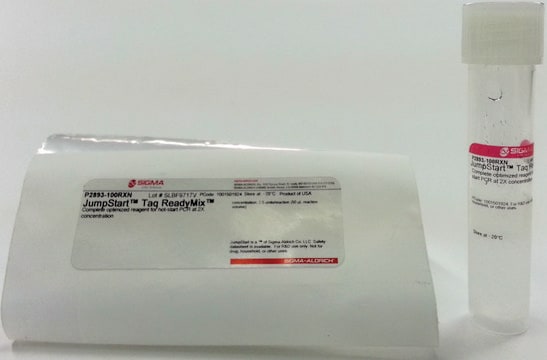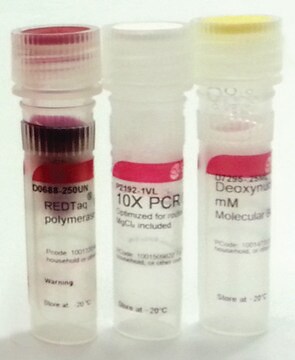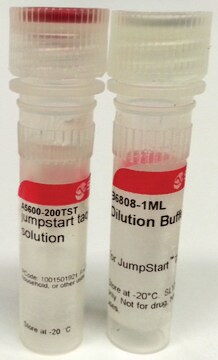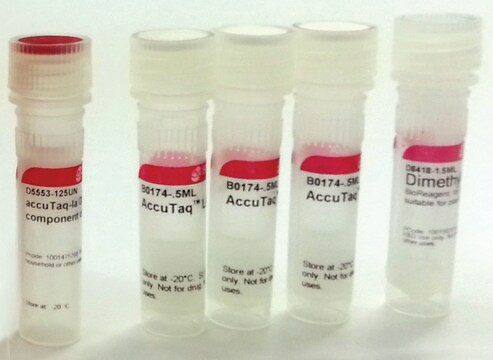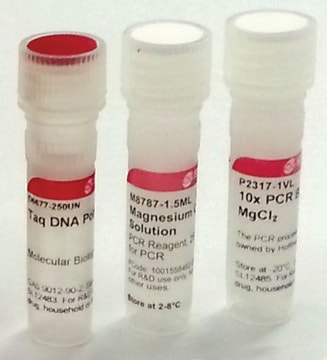D8187
JumpStart™ REDTaq® DNA Polymerase
Hot-start Taq enzyme with inert dye, 10X buffer included
Synonym(s):
Hot start DNA polymerase, Hot start Taq
About This Item
Recommended Products
Quality Level
form
liquid
usage
sufficient for 250 reactions
sufficient for 2500 reactions
sufficient for 50 reactions
feature
dNTPs included: no
hotstart
concentration
1 unit/μL
technique(s)
PCR: suitable
color
red
input
purified DNA
suitability
suitable for PCR
shipped in
wet ice
storage temp.
−20°C
General description
Since the red tracer has no effect on the amplification process, a sample can be easily re-amplified such as in “nested PCR”. The presence of the dye also has no effect on automated DNA sequencing; ligase mediated ligations, exonucleolytic PCR product digestion, and transformation. Though exceptions may exist, the dye is generally inert in restriction enzyme digestions. If necessary, the dye can be removed from the amplicon by routine purification methodologies.
Application
- insulin-enterotoxin ricin fusion gene (INS-RTB)
- endothelial cells DNA derived from reverse transcribed RNA
- leg genomic DNA from cricket flies
- mitochondrial gene by conventional PCR
Features and Benefits
- Reduces non-specific amplification
- Increased target yield and specificity
- Higher the amplification irrespective of the target concentration
- Reduce set-up time and eliminate concerns associated with manual or wax hot start methods
- Visual confirmation that the enzyme has been added and that proper component mixing of the reaction has occurred
- Samples can be loaded directly onto an agarose gel for electrophoresis without loading buffers or tracking dyes
- Assembled PCR reactions can be placed at room temperature for up to 2 hours
Packaging
Unit Definition
Other Notes
Legal Information
related product
Signal Word
Warning
Hazard Statements
Precautionary Statements
Hazard Classifications
Eye Irrit. 2 - Skin Irrit. 2 - STOT SE 3
Target Organs
Respiratory system
Storage Class Code
10 - Combustible liquids
WGK
WGK 3
Flash Point(F)
Not applicable
Flash Point(C)
Not applicable
Personal Protective Equipment
Certificates of Analysis (COA)
Search for Certificates of Analysis (COA) by entering the products Lot/Batch Number. Lot and Batch Numbers can be found on a product’s label following the words ‘Lot’ or ‘Batch’.
Already Own This Product?
Find documentation for the products that you have recently purchased in the Document Library.
Customers Also Viewed
Articles
Learn about the history of the polymerase chain reaction (PCR), from the basic principles that proceeded its discovery to the awarding of a Nobel Prize for Chemistry and more recent developments such as real-time PCR (qPCR) and digital PCR.
The purpose of Hot Start PCR is to inhibit the PCR reaction in order to reduce nonspecific amplification, prevent the formation of primer dimers, and increase product yields.
Protocols
Reviews the applications and benefits for RedTaq, including standard RedTaq, Hot Start RedTaq and RedTaq for genomic DNA PCR.
Protocol using antibody mediated hot start polymerase with a red dye for easy gel loading. Method has short activation period (<1min), and results in higher yields and more specificity over standard PCR methods.
Protocol using antibody mediated hot start polymerase. Method has short activation period (<1min), and results in higher yields and more specificity over standard PCR methods.
When using hot start Taq DNA polymerase, the enzyme remains inactive until heated. Hot Start DNA polymerase control is achieved by chemical or antibody modification of the enzyme.
Our team of scientists has experience in all areas of research including Life Science, Material Science, Chemical Synthesis, Chromatography, Analytical and many others.
Contact Technical Service